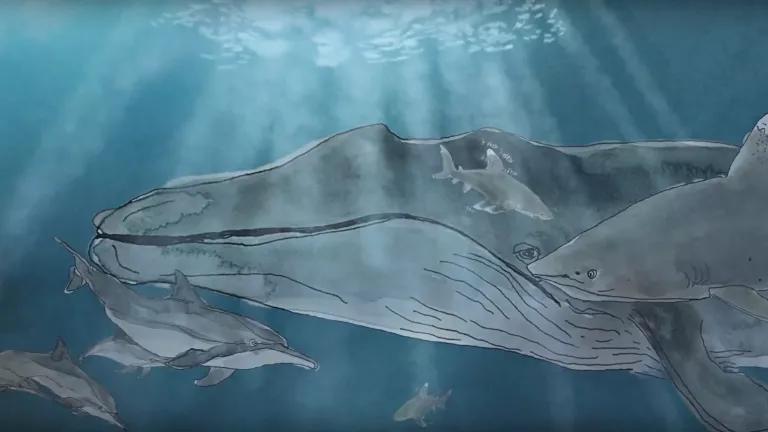On World Wildlife Day (and Every Day) Protect the High Seas

The high seas—the area of ocean outside of national jurisdiction that covers nearly half the planet—is an enormous reservoir of life. It makes up 95 percent of occupied space on earth, providing important habitat for sharks, whales, tuna, anglerfish, albatross, and new species being discovered with seemingly every new underwater expedition.
That’s why the theme of this year’s World Wildlife Day being “life below water” is so apt—it’s recognizing the fact that so much life on earth lives in the ocean, and that we need to do a better job at protecting it.
One of the biggest opportunities to better protect the ocean is to secure stronger protections for the high seas. Right now, the area is governed by decades-old laws that do not adequately conserve wildlife nor effectively mitigate harmful environmental impacts from occurring. Marine protected areas (MPAs)—ocean parks where human activity is limited so that fish and other species can thrive—are one of the most effective ways to protect biodiversity but there’s no globally recognized mechanism to set up fully protected marine reserves on the high seas. Further, activities with big potential environmental impacts, like fishing, ballast water discharge from ships, and pipeline laying, are subject to environmental standards that are either nonuniform or do not exist at all.
This lack of safeguards is contributing to a decline in ocean health and to the extinction risk facing 2,332 species of fish and nearly a third of shark and ray species. Fortunately, governments recognize the deficiencies in the existing legal regime and in 2018 began negotiating a treaty to better conserve biodiversity outside of national jurisdiction.
If successful, the new treaty, under negotiation at the United Nations between 2018 and 2020, will fill gaps in the law that are contributing to the decline of marine wildlife. It will also be critical in establishing protections for what scientists say is the portion of ocean needed to safeguard against climate change, ocean acidification, and the other threats facing our oceans. There is convergence across the conservation community that, to ensure a healthy ocean ecosystem, at least 30% of the ocean needs to be protected while sustainably managing activities outside of those areas protected.
As these treaty negotiations represent a once-in-a-generation opportunity to protect half the planet, NRDC is working hard to ensure that strong conservation safeguards are central to the agreement. With half the planet—and all of the whales, dolphins, and other wildlife that rely on it to survive—at stake, World Wildlife Day could not be calling attention to a more critical cause.

